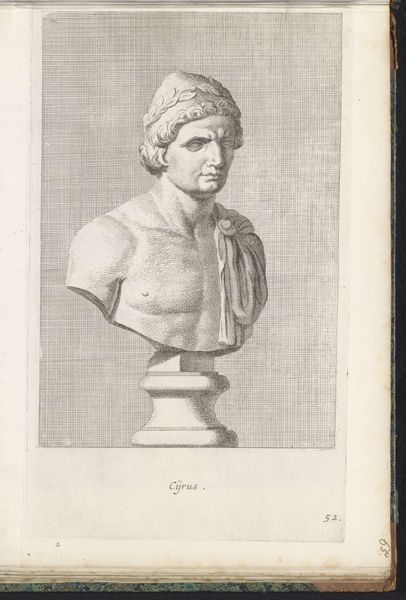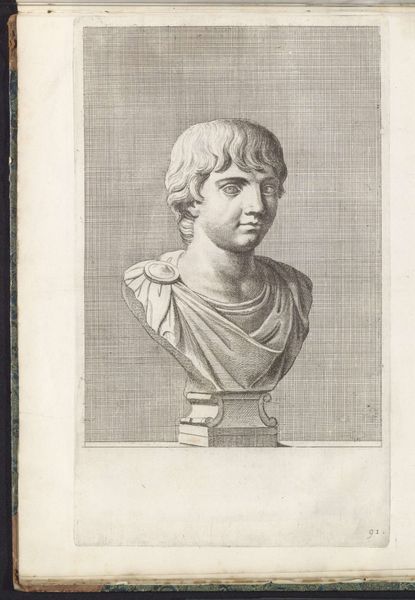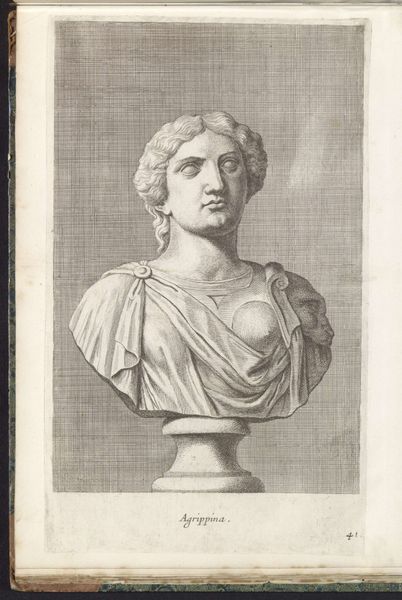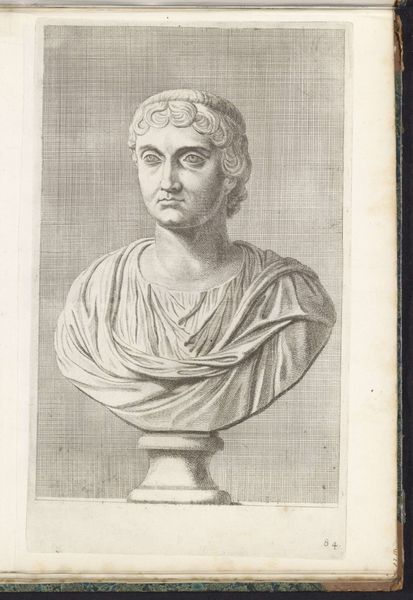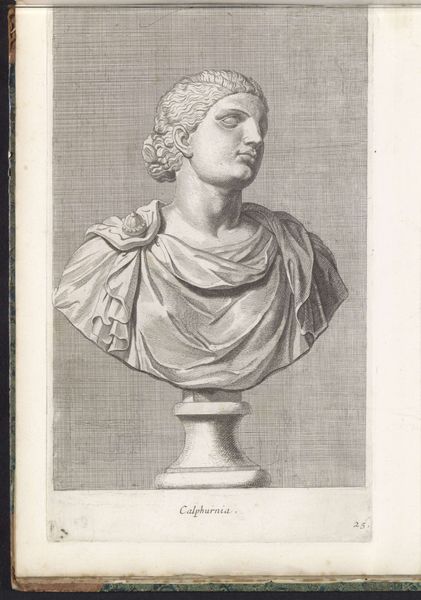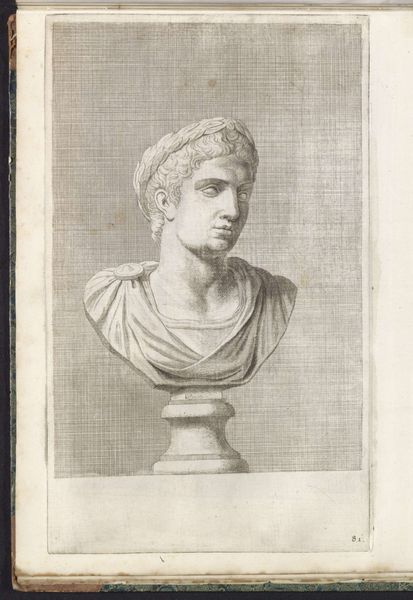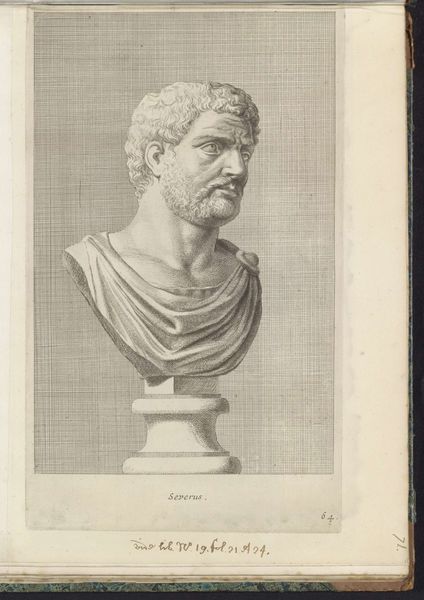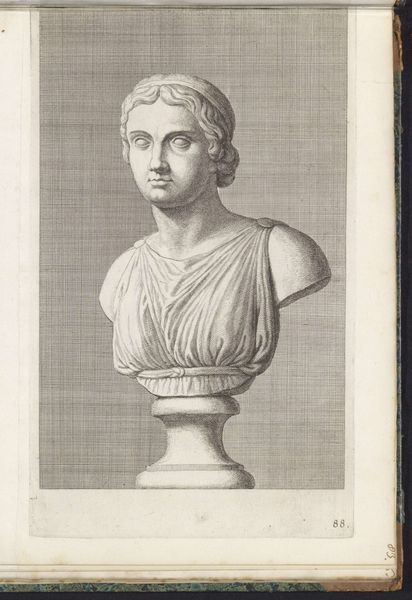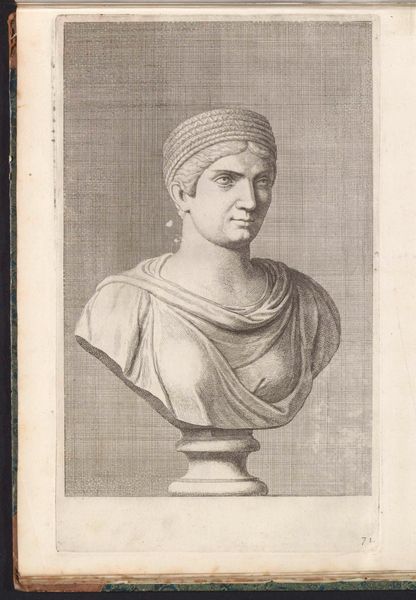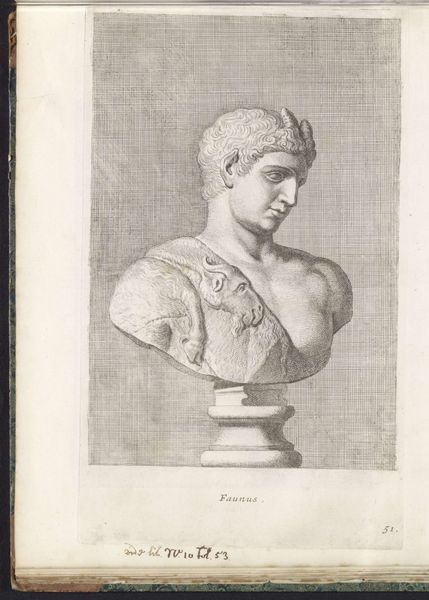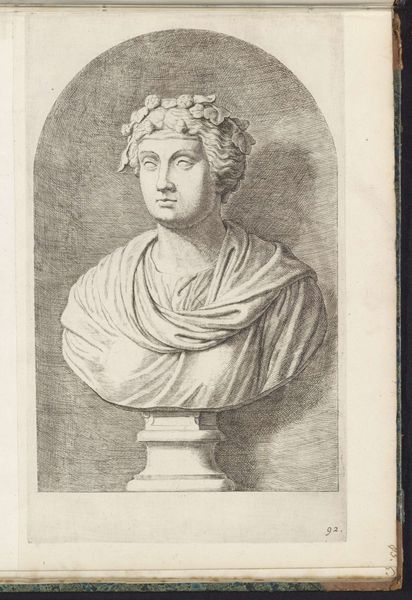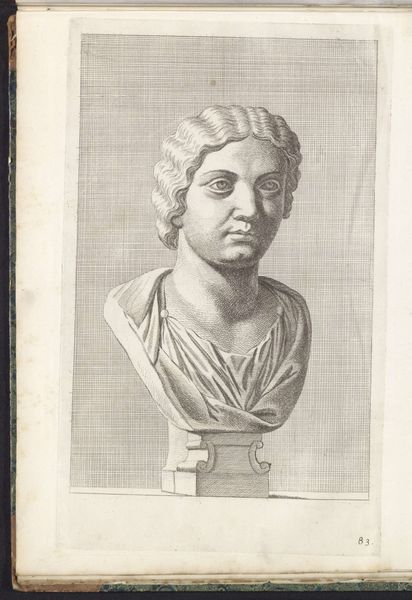
print, sculpture, engraving
#
portrait
#
baroque
# print
#
classical-realism
#
figuration
#
ancient-mediterranean
#
sculpture
#
history-painting
#
engraving
Dimensions: height 328 mm, width 199 mm
Copyright: Rijks Museum: Open Domain
This print of Buste van Bacchus, made by Hubert Quellinus in the 17th Century, captures the likeness of the Roman god of wine, theatre and ecstasy. It's an engraving, a printmaking technique where lines are incised into a metal plate, which then holds ink and transfers the image to paper. The material quality of the print is critical to its effect. The sharp, precise lines create a sense of classical clarity, but also hint at the labor involved. Each line was painstakingly carved, a slow and deliberate process. Printmaking like this allowed for the wide distribution of images, democratizing art but also turning it into a commodity. Quellinus was working within a system where skill and artistry were increasingly tied to production and the market. This print is not just a representation of Bacchus; it’s a testament to the changing relationship between art, labor, and consumption in the early modern world. The artist's hand, mediated through the mechanics of engraving, speaks volumes about the society that produced it.
Comments
No comments
Be the first to comment and join the conversation on the ultimate creative platform.
